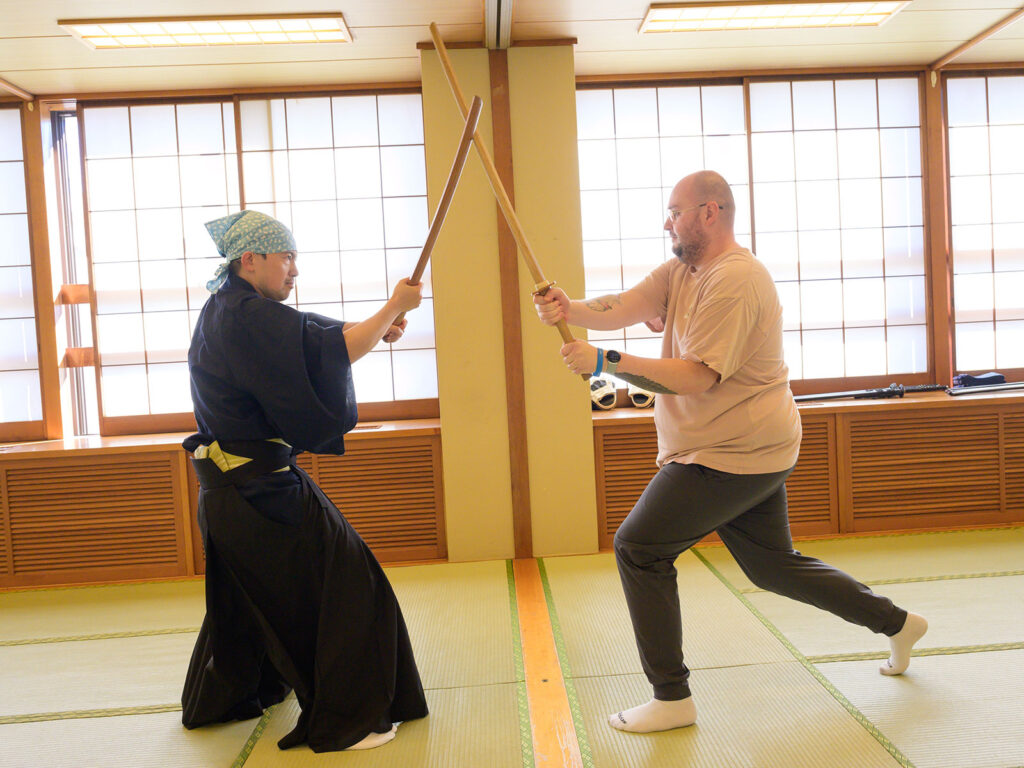Matcha Tea Ceremony: Feel the Difference Shizuoka and Uji
Experience the essence of Japanese tea culture by crafting matcha from Shizuoka and Uji while discovering their unique differences.
About
About Matcha
Matcha is a finely ground green tea powder, traditionally used in Japanese tea ceremonies. Unlike regular green tea, it is whisked into a frothy drink, making it a unique and hands-on experience. Rich in antioxidants and nutrients, it is also known for its health benefits, including boosting energy and promoting relaxation.
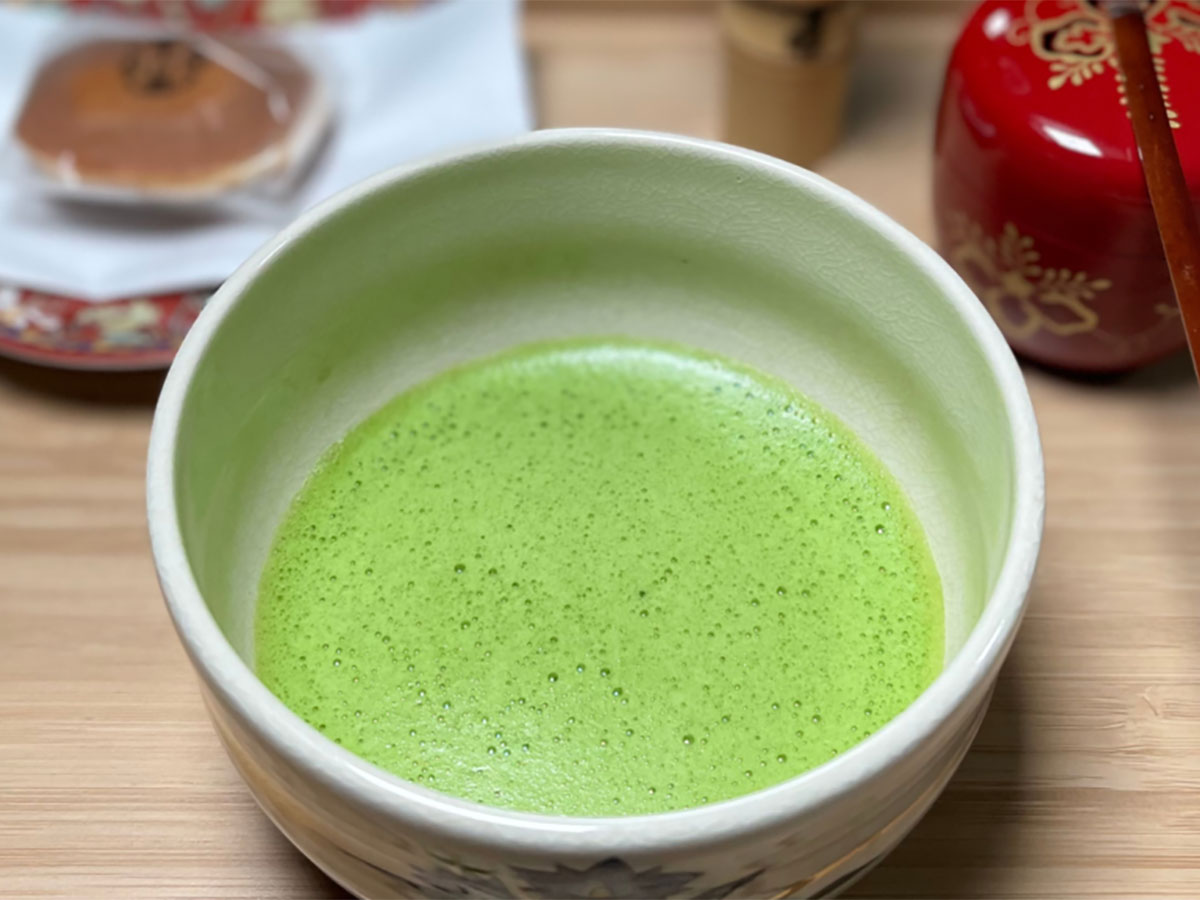
Let’s make it by yourself!
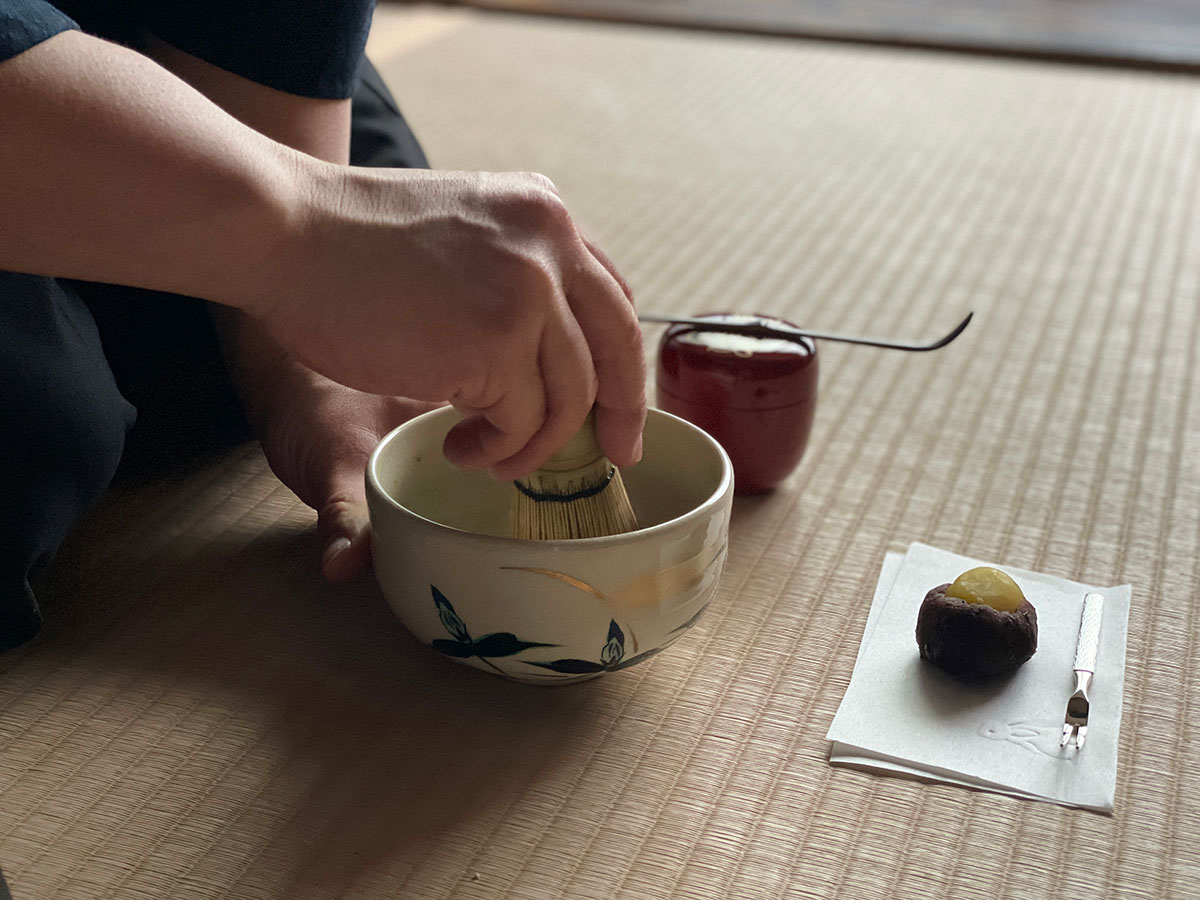
Matcha making and tasting experience
5,000JPY
Currently Unavailable.
- Schedule Available: Monday to Friday, 9 AM – 5 PM
- Maximum 45 minutes (depending on number of participants)
- Private tour
- up to 3 people
Immerse yourself in the art of Japanese tea culture with our hands-on experience. Prepare your own matcha tea under the gentle guidance of our attentive staff. This unique experience invites you to savor the authentic taste of Japan while enjoying the serene ambiance of a traditional tea ceremony.
Experience the taste of Shizuoka and Uji
Experience the difference between matcha from Shizuoka and Uji in a unique tasting session. Discover the rich, bold flavor of Uji and the light, refreshing taste of Shizuoka – a perfect way to explore Japan’s regional tea culture.
Wagashi, Japanese traditional sweets
Japanese sweets change with the seasons, so we have carefully selected seasonal wagashi from Tsukishima.
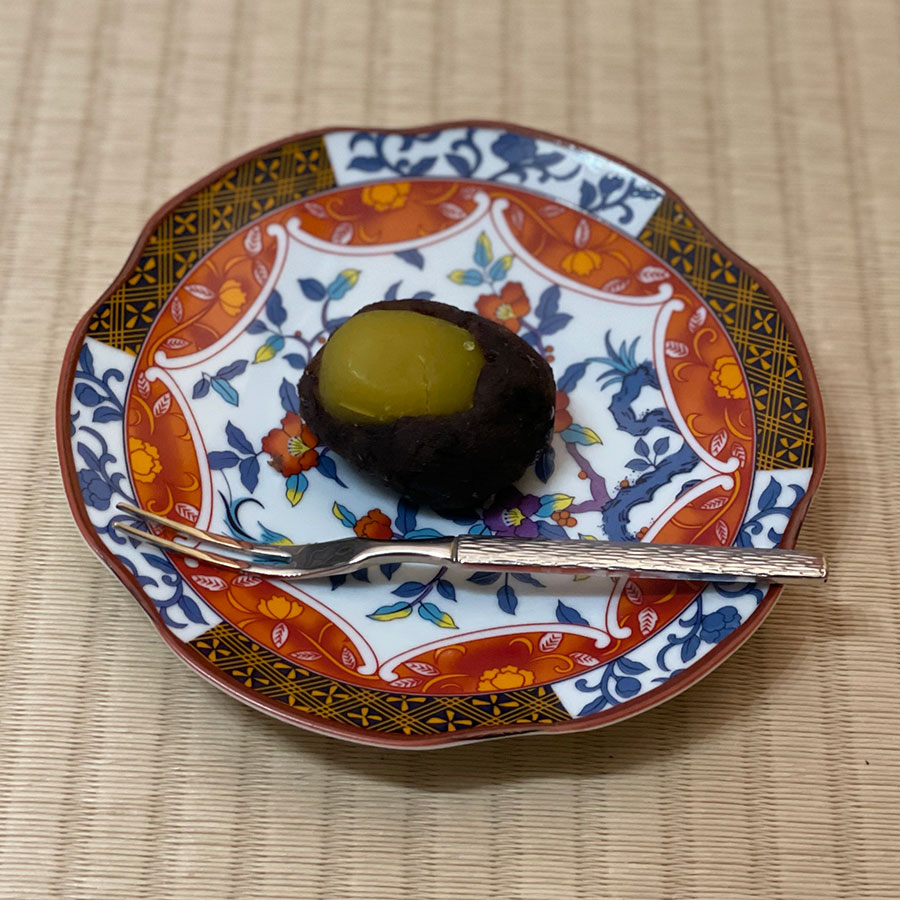
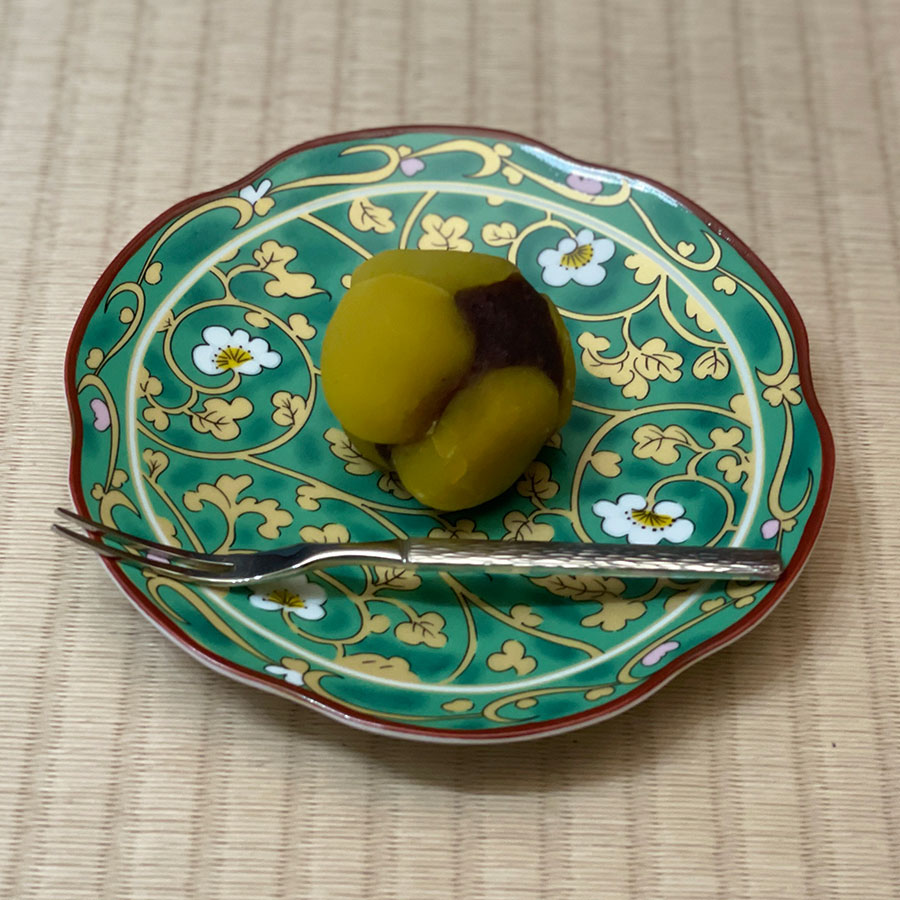
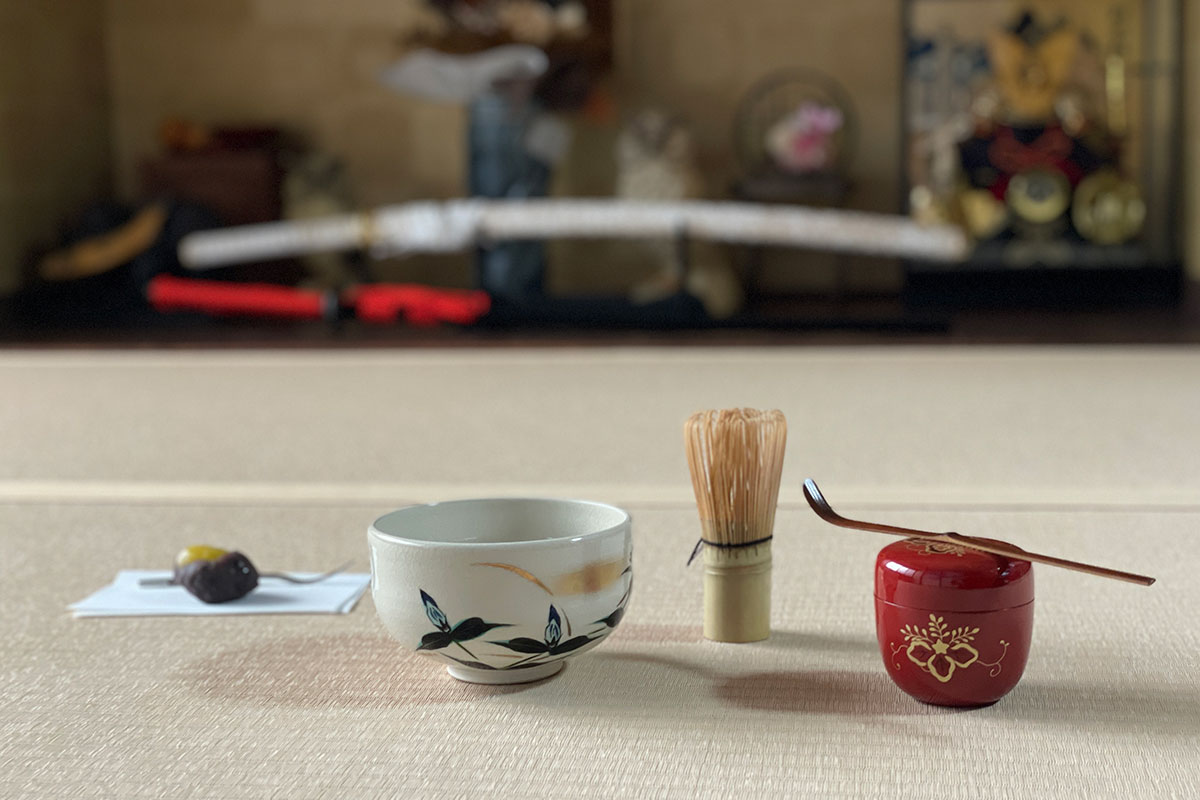
Enjoy them alongside matcha, which enhances their rich flavors. We often serve chestnut sweets.
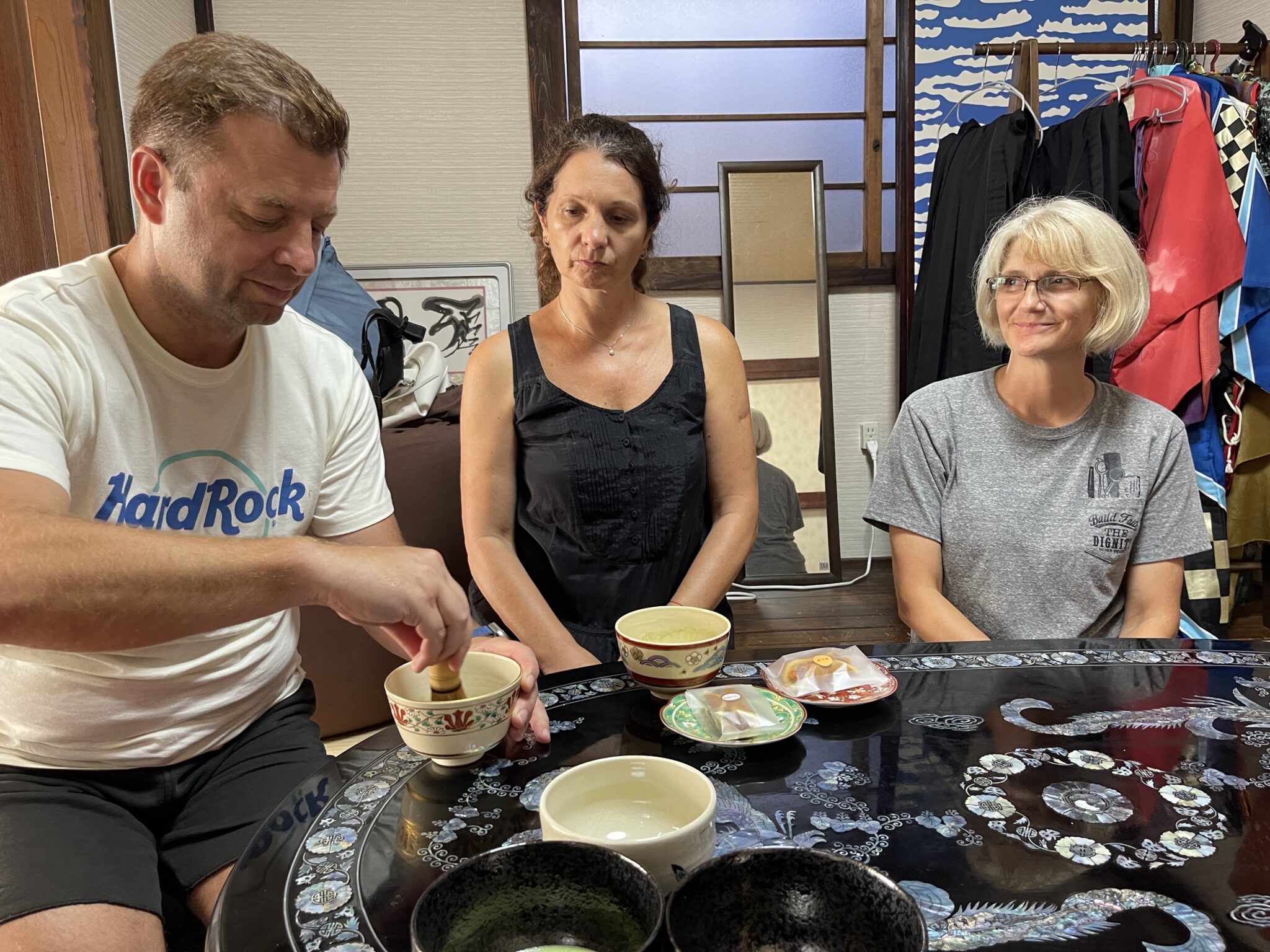
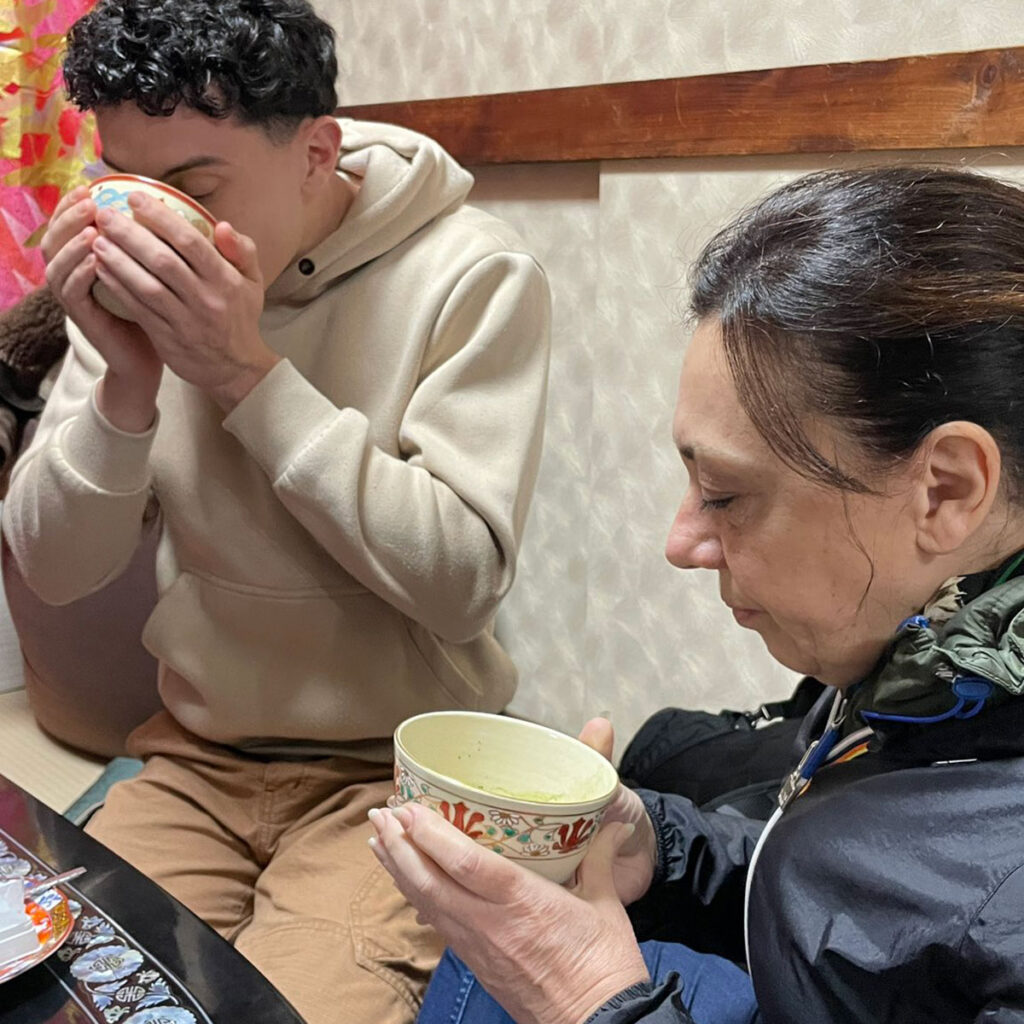
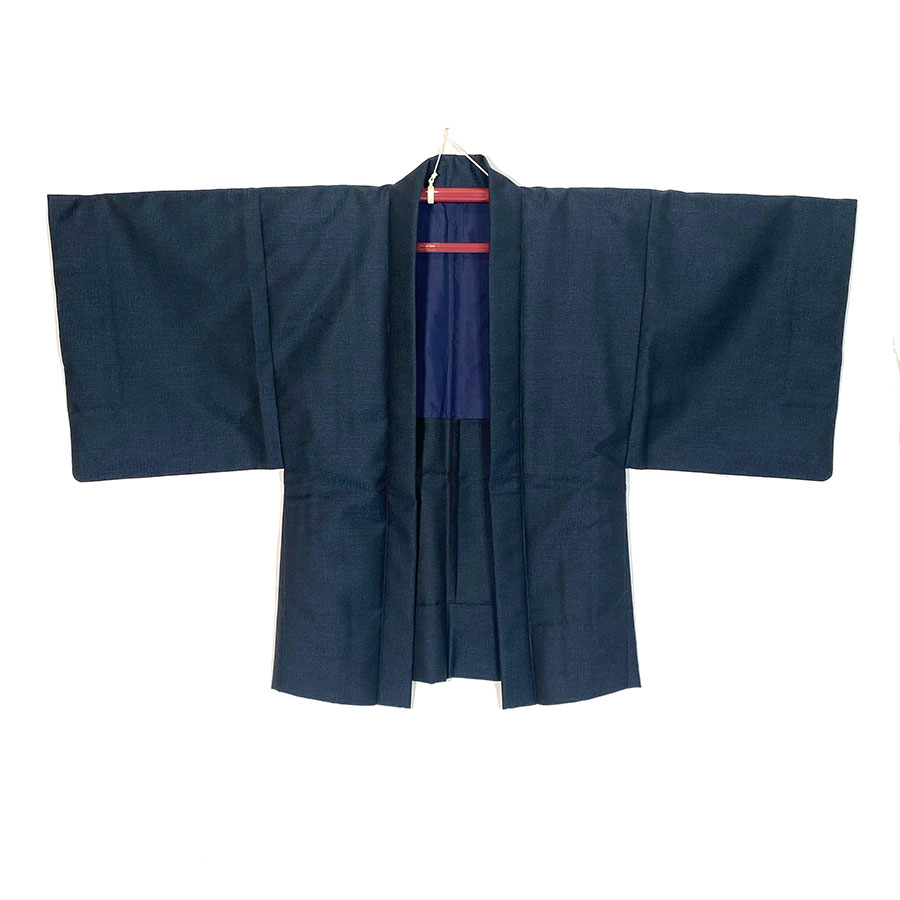
Samurai Wear (Free)
If you wish, you can wear a samurai jacket (a simple outer layer) during the tea experience. A full outfit is available for an additional fee.
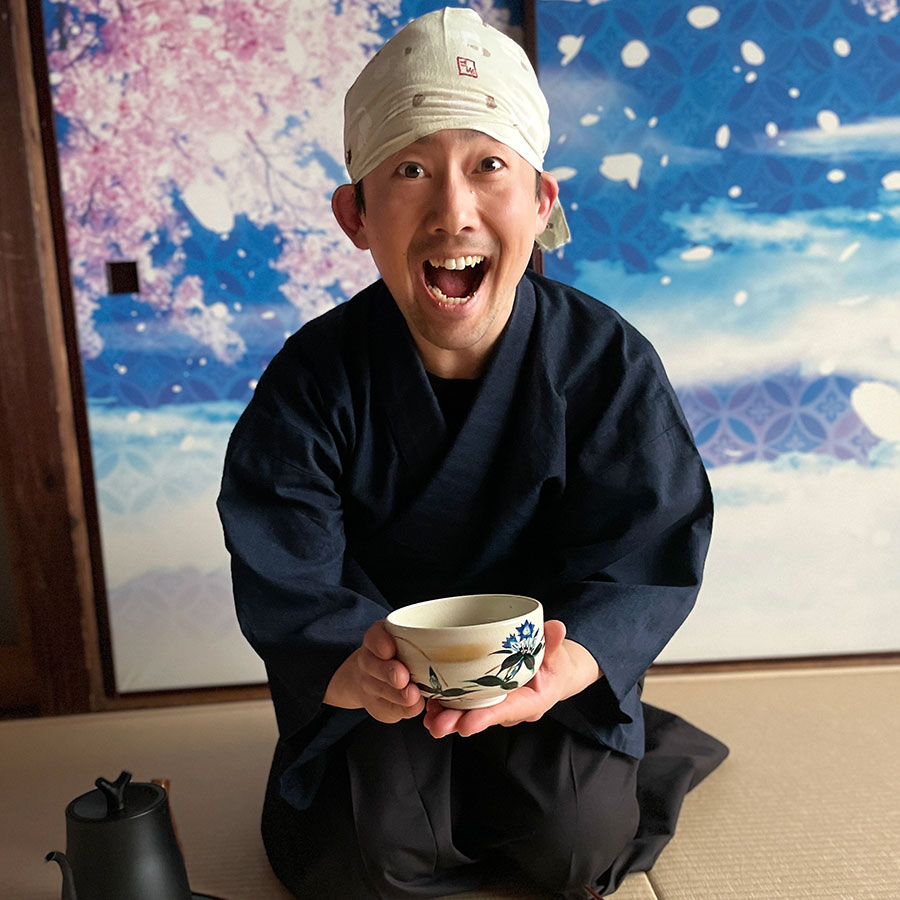
Kume, Your Japanese Tea Guide
Matcha Samurai
I am Kume, and I love matcha. There are various schools of the Japanese tea ceremony, each with its own unique etiquette. The three major schools are Omotesenke, Urasenke, and Mushakouji-senke. My mother, however, was a master of the Kobori Enshu school. Because of that, I grew up drinking the matcha she prepared on a daily basis.
The Kobori Enshu school was founded in the 17th century by the tea master Kobori Enshu. It is known for its simple yet elegant style, embodying the wabi-cha aesthetic of Sen no Rikyu—an appreciation for refined simplicity—while emphasizing harmony, respect, and gratitude in daily life. This school features a refined and dignified tea ceremony suited to samurai culture and has also influenced the design of tea rooms and gardens.
Having been raised in such an environment, I developed a deep love for matcha and still drink it every day. I often enjoy matcha from Uji and Shizuoka, each of which has distinct bitterness and astringency. Uji matcha, grown around Uji City in Kyoto Prefecture, has a long history and is known for its fragrant aroma, smooth texture, and deep flavor. On the other hand, Shizuoka matcha is cultivated in Japan’s largest tea-producing region and offers a light, refreshing taste with a relatively mild impression.
Uji matcha is often associated with luxury and tradition and is frequently used in tea ceremonies. It also has international recognition. Meanwhile, Shizuoka matcha is more affordable and widely enjoyed in everyday life. Uji matcha, with its well-balanced flavor, has little bitterness, while Shizuoka matcha is said to have a natural sweetness. However, from my experience, many Shizuoka matcha varieties tend to have a stronger bitterness. Of course, this depends on the price and brand, but for now, I prefer Uji matcha.
There are many people far more knowledgeable about tea than I am, but since I drink matcha every day, I believe I can offer a unique experience. That’s why I call myself “Matcha Samurai” and continue my training. My concept is Easy, Enjoyable, and Healthy. Exploring different types of matcha brings new discoveries every day. I am still on my journey, but I hope to help others experience the true essence of matcha.
Frequently Asked Questions
What is the difference between matcha and green tea?
Matcha is powdered green tea made from finely ground leaves, while regular green tea is brewed from whole or crushed leaves. It is more concentrated, offering a stronger flavor and higher levels of antioxidants and caffeine.
Why do you eat wagashi before drinking matcha?
Eating wagashi first helps balance the bitterness of matcha with the sweetness of the sweets, enhancing the overall flavor experience. It also prepares the palate to fully appreciate its flavor.
Is matcha good for your health?
Yes, matcha is rich in antioxidants, particularly catechins, which may help with metabolism, improve focus, and lower the risk of certain diseases. It also contains L-theanine, which promotes relaxation and balances the stimulating effects of caffeine.
Why do you whisk matcha?
Whisking matcha helps dissolve the powder and create a smooth, frothy texture. The foam enhances its flavor and aroma while ensuring an even mix with the water for better taste and appearance.
What are the payment methods for the tour?
We accept cash and major credit cards.
How can I book the tour?
You can book the tour through the form on this website. It is also available on GetYourGuide.
Is there a dress code?
There is no dress code, so casual clothing is fine. A simple outer layer is available for free, but a full outfit is available for a fee if you prefer a more authentic look.
Our Samurai Experience is also very popular!
